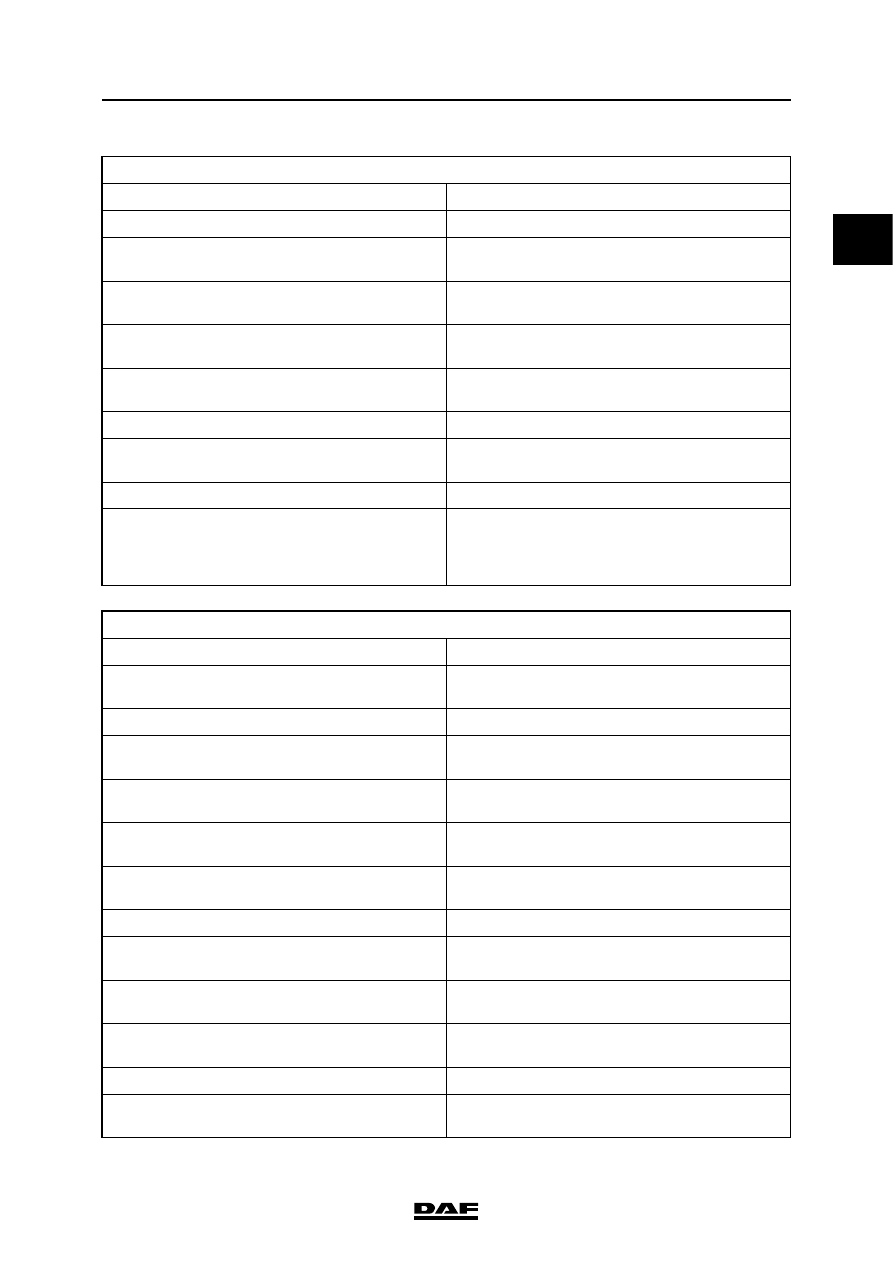DAF CF65, CF75, CF85 Series . Manual - part 946

©
200423
1-3
Steering gear, general
DIAGNOSTICS
ΧΦ65/75/85 series
7
1
SYMPTOM: WHEEL DEFLECTION TOO SMALL
Possible cause
Remedy
The vehicle is being steered when at a standstill
Steer while the vehicle is moving.
Incorrect setting of maximum wheel deflection at
the axle
Check maximum wheel deflection and - if
incorrectly set - correct it.
Wheel deflection limiting valves incorrectly
adjusted
Check setting of the wheel deflection limiting
valves.
Axle load of steerable axle(s) too high
Check axle load(s).
Adjust the load.
System pressure too low
Check maximum system pressure.
Replace pressure-limiting valve or steering pump.
Steering rod incorrectly set
Check steering rod setting.
Pitman arm installed in the wrong position on
steering box output shaft
Check whether position of pitman arm on the
sector shaft is correct, using the markings.
Wrong pitman arm installed on steering box
Check the pitman arm part number.
Sector shaft is installed in the wrong position in the
steering box
Put steering box in the central position and check
whether the sector shaft is correctly installed, using
the markings on the input shaft and on the sector
shaft.
SYMPTOM: VEHICLE PULLS TO ONE SIDE
Possible cause
Remedy
Unequal weight distribution causing the vehicle to
tilt
Adjust the weight distribution.
Firth-wheel coupling insufficiently lubricated
Lubricate fifth-wheel coupling.
Driving over cambered roads.
When driving over cambered roads, bear in mind
that the vehicle might pull to one side.
Difference in tyre pressure between the wheels on
the steerable axle(s)
Check the tyre pressure. Pump both tyres to the
specified value.
Different tyre types or difference in tread depth
between tyres of the steerable axle(s)
Always fit tyres of the same type and tread depth
on the axle.
Different wheel rims installed on the steerable
axle(s)
Always install wheel rims of the same type on the
axle.
Fault in one of the tyres
Replace the tyre on the side the vehicle pulls to.
Incorrectly adjusted brakes or a brake of the
steerable axle(s) which is "dragging".
Check brakes. If necessary repair and re-adjust.
Misalignment of the universal joints of the steering
column
Check/adjust position of the universal joints in
relation to each other.
Poorly adjusted wheel bearing play
Check wheel bearing adjustment. Adjust the wheel
bearing play until correct.
Incorrect caster
Check caster. Adjust caster until correct.
Incorrect camber angle
Check camber angle.
Check axle housing.